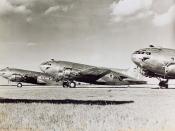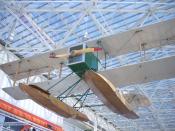Boeing vs Airbus: The Ongoing WTO Dispute
Introduction
For decades there has been a simmering dispute between the US and the EU over subsidies and other forms of aid for the world's two dominant makers of civil aircraft, Boeing and Airbus. Both sides accuse the other of distorting competition within the sector by receiving various forms of aid. Both Airbus and Boeing calculate that total subsidies running into the double digit billions have been unjustifiably pumped into the aircraft industry of their rival.
In October 2004, the United States terminated the Agreement on Trade in Large Civil Aircraft, which it signed with the EU in 1992. At the same time, the U.S. government initiated WTO dispute settlement procedures regarding subsidies to the European aircraft industry. In response, the EU initiated similar WTO proceedings against the United States. Since then, all attempts to get the two parties back to the negotiating table have failed.
This paper provides a brief commercial aircraft industry background, the market strategy of both Boeing and Airbus, and the current position of these firms on the market. It also describes WTO dispute between Airbus and Boeing and proposes potential solutions which could resolve this unique controversy.
Aircraft Industry Background
The US aircraft industry was traditionally one of the most successful industries of all time; hence, it shortly attracted a substantial amount of attention from policy makers. Because of its high fixed costs and the presence of the economies of scale and scope, there are extremely high entry barriers. Before European Airbus was introduced to the world market, there were three major aircraft manufacturers - Boeing, Lockheed, and McDonnell Douglas. Boeing was established in 1916 as a supplier of military airplanes by producing either fighter aircrafts or bombers for the Air Force�. Shortly after WWII and the Korean...


